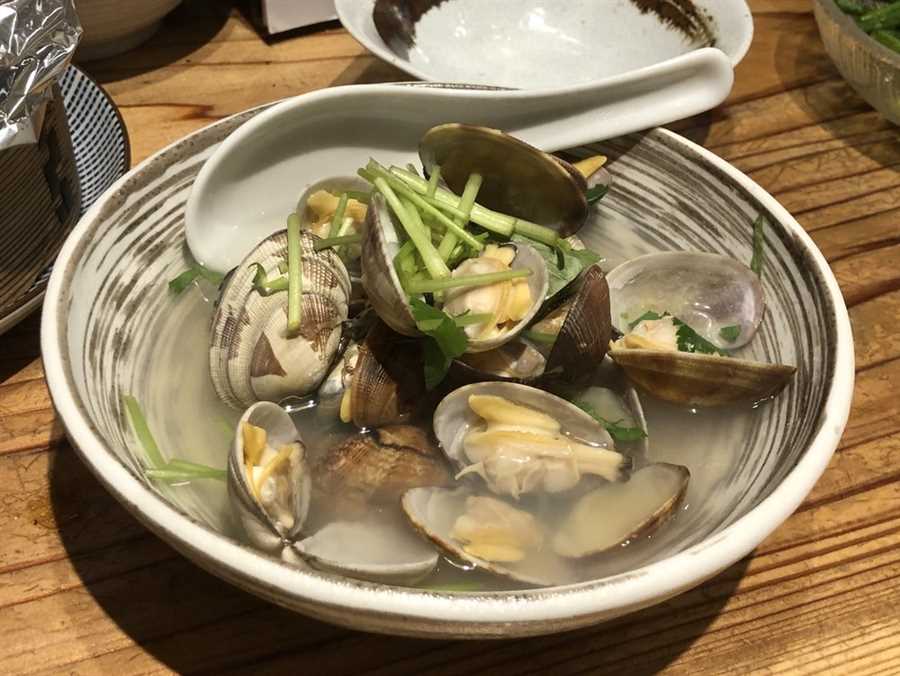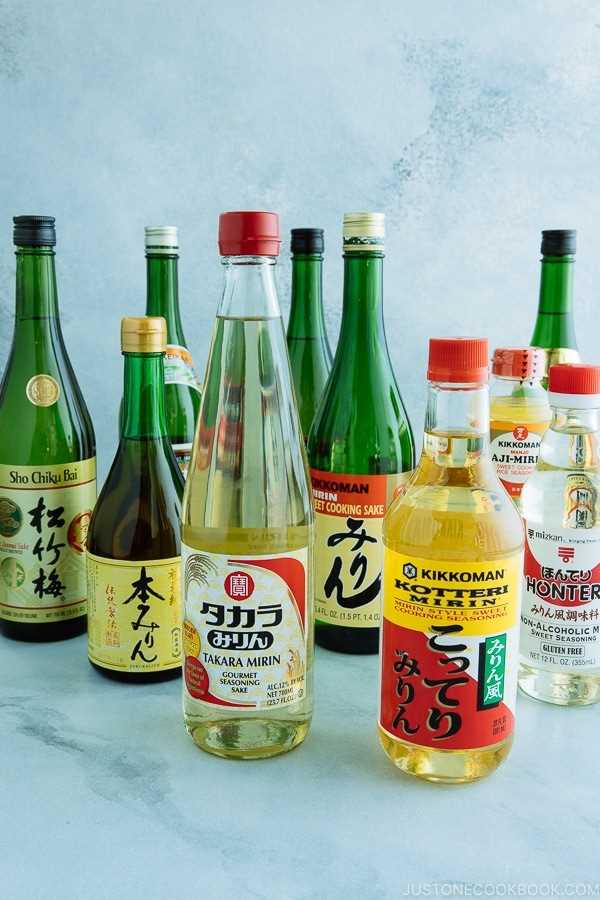



Sake, also known as Japanese rice wine, is not only a popular beverage but also a versatile ingredient in cooking. While often enjoyed on its own or used as a base for cocktails, sake can add a unique flavor profile to a variety of dishes.
One of the key characteristics of sake is its umami taste, which adds depth and richness to foods. It has a subtle sweetness and a complex aroma that can enhance the overall flavor of a dish.
When cooking with sake, it is important to choose the right type for the recipe. There are different varieties of sake, each with its own flavor profile, ranging from dry to sweet. The quality and grade of sake can also vary, so it is worth exploring different options to find the best fit for your cooking needs.
Some popular ways to cook with sake include using it as a marinade for meat or fish, adding it to sauces and dressings, or using it to deglaze a pan for a flavorful sauce.
Whether you are a fan of Japanese cuisine or want to explore new flavors in your cooking, experimenting with sake can open up a world of possibilities in the kitchen. Its unique taste and versatility make it a great addition to a wide range of recipes.
The Role of Sake in Cooking
Sake, a traditional Japanese rice wine, is not only enjoyed as a beverage but also plays a significant role in cooking. Its unique flavor and aroma can enhance the taste of various dishes and bring out their natural flavors.
Here are some ways in which sake can be used in cooking:
- Marinades: Sake can be used as a base for marinating meats, seafood, and vegetables. Its acidity helps to tenderize the ingredients and infuse them with flavor.
- Sauces: Sake can be added to sauces and gravies to add depth and complexity to their taste. It can be used in dishes like teriyaki sauce, stir-fry sauces, and noodle dressings.
- Steaming: When steaming fish or vegetables, adding sake to the steaming liquid can impart a delicate flavor and aroma to the food.
- Broths and Soups: Sake can be added to broths and soups to add a subtle umami flavor and richness to the dish.
It is important to note that when cooking with sake, it is recommended to use a sake that is suitable for cooking rather than a premium drinking sake. Cooking sake has a higher salt content and is specifically brewed for culinary purposes.
In conclusion, sake can be a versatile ingredient in cooking and can elevate the taste of various dishes. Its ability to enhance flavors and add depth to sauces and marinades makes it a valuable addition to any culinary repertoire.
What is sake and its culinary applications

Sake is a Japanese rice wine that has been brewed for over a thousand years. It is made from fermented rice, which gives it a distinct flavor and aroma. Sake is often enjoyed on its own, but it can also be used in cooking to add depth and complexity to dishes.
One of the most common uses of sake in cooking is as a marinade. The alcohol in the sake helps to tenderize meat and seafood, while the subtle flavor enhances the taste of the dish. Sake can also be used as a deglazing agent, which adds flavor to sauces and gravies.
In addition to being used in savory dishes, sake can also be used in desserts. It can be added to cakes and custards to give them a unique flavor, or used to make sake-flavored ice cream. The sweetness of the sake balances out the richness of the dessert, creating a harmonious flavor profile.
When using sake in cooking, it is important to choose a quality sake that is suitable for the dish. Sake labeled as “junmai” is made from rice only, while “honjozo” sake is made with the addition of a small amount of distilled alcohol. Both types can be used in cooking, but junmai sake tends to have a richer flavor that pairs well with hearty dishes.
Overall, sake is a versatile ingredient that can be used in a variety of culinary applications. Whether you are marinating meat, deglazing a pan, or adding a unique flavor to a dessert, sake can elevate the taste of your dishes and bring a taste of Japan to your kitchen.
Enhancing Flavors: Sake as a marinade or sauce
When it comes to cooking with sake, there are numerous ways to enhance the flavors of your dishes. One popular method is using sake as a marinade or sauce. Sake’s unique taste and aroma can add depth and complexity to a wide range of dishes, from seafood to meats and vegetables. Here are some ideas on how to incorporate sake into your marinades and sauces:
Marinades

When using sake as a marinade, it’s important to choose the appropriate type of sake for your dish. The general rule of thumb is to use a sake that you would also enjoy drinking. A dry sake with a clean and crisp flavor profile works well for marinades. Here are a few ideas for sake-based marinades:
- Seafood: Combine sake with soy sauce, ginger, garlic, and a touch of sesame oil for a delicious marinade for fish or shellfish.
- Chicken: Mix sake with soy sauce, mirin, honey, and grated apple or ginger for a flavorful marinade that can be used for grilled or stir-fried chicken.
- Beef: Create a marinade with sake, soy sauce, brown sugar, garlic, and black pepper for tenderizing and adding an umami-rich flavor to beef.
Sauces
Sake can also be used to create flavorful sauces that pair well with various dishes. Here are some examples of sake-based sauces:
- Stir-Fry: In a hot pan, combine sake, soy sauce, sesame oil, sugar, and cornstarch to make a savory sauce that can be drizzled over stir-fried vegetables, tofu, or meat.
- Teriyaki: Mix sake with soy sauce, mirin, sugar, and ginger to create a classic teriyaki sauce that works well with grilled or pan-fried dishes.
- Ponzu: Combine sake with citrus juice, soy sauce, and a touch of rice vinegar for a tangy and refreshing sauce that is perfect for dipping or dressing light salads.
In conclusion, sake can be a versatile ingredient when it comes to enhancing the flavors of your dishes. Whether used as a marinade or sauce, sake adds a unique taste and aroma that complements a variety of ingredients. So next time you’re looking to elevate your cooking, consider incorporating sake into your recipes.
Substituting Sake: Alternatives in Cooking
When it comes to cooking with sake, there are times when you may need a substitute. Whether you want to avoid using alcohol for personal or religious reasons, or simply don’t have any sake on hand, there are several alternatives that can be used in its place. Here are some options to consider:
- Mirin: Mirin is a sweet rice wine that is often used in Japanese cooking. It has a similar flavor profile to sake but is sweeter. Mirin can be used as a 1:1 substitute for sake in most recipes.
- Rice Vinegar: Rice vinegar is a mild and slightly sweet vinegar made from fermented rice. While it doesn’t have the same alcohol content as sake, it can add a similar tanginess to dishes. To use rice vinegar as a substitute for sake, mix it with a small amount of sugar to mimic the sweetness of sake.
- White Grape Juice: If you’re looking for a non-alcoholic alternative, white grape juice can be used in place of sake. It has a similar fruitiness that can complement many dishes. Keep in mind that white grape juice is sweeter than sake, so you may need to adjust the amount of sugar in your recipe.
- Chicken or Vegetable Broth: If you’re looking for a non-alcoholic and non-sweet alternative, chicken or vegetable broth can be used in place of sake. While it won’t add the same depth of flavor as sake, it can still help to enhance the taste of your dish.
Remember, when substituting sake in a recipe, it’s important to consider the flavor profile and purpose of the sake in the dish. Experiment with different alternatives to find the one that best suits your needs and preferences.
Health Benefits: Sake’s impact on dishes
Sake, a traditional Japanese rice wine, can offer several health benefits and enhance the flavor of dishes. While it is primarily known for its consumption as a beverage, cooking with sake can elevate the taste and aroma of various dishes.
Here are some health benefits of incorporating sake into your cooking:
1. Adds Unique Flavor: Sake provides a subtle and complex flavor to dishes, enhancing the overall taste. It can add depth and richness to sauces, soups, marinades, and stir-fries.
2. Improves Digestion: Consuming moderate amounts of sake in cooking can aid digestion. Sake contains amino acids and naturally occurring enzymes that promote better digestion.
3. Enhances Nutrient Absorption: The presence of alcohol in sake can help improve the absorption of certain nutrients from the food. This allows the body to better utilize the essential vitamins and minerals present in the dish.
4. Contains Antioxidants: Sake contains antioxidants, such as amino acids and polyphenols, which help protect the body against free radicals and oxidative stress. These antioxidants may offer various health benefits, including reducing the risk of chronic diseases.
5. Supports Weight Loss: When used in moderation, sake can be part of a healthy and balanced diet. It is relatively low in calories and fat, making it a suitable choice for those who are watching their weight.
Keep in mind that excessive consumption of sake, either as a beverage or in cooking, can have adverse effects on health. It is essential to enjoy sake in moderation and consult a healthcare professional if you have any health concerns.
Questions and answers
What is sake?
Sake is a Japanese rice wine that is commonly consumed as a traditional alcoholic beverage in Japan. It is made from fermented rice and has a distinct taste and aroma.
Can you cook with sake?
Yes, sake can be used as a cooking ingredient. It adds a unique and delicate flavour to dishes and is commonly used in Japanese cuisine for marinating, simmering, and deglazing.
What dishes can you cook with sake?
Sake can be used in a variety of dishes such as teriyaki chicken, sushi rice, miso soup, and seafood stir-fry. It enhances the flavours and adds a subtle sweetness to the dishes.
Can I substitute sake with something else?
If you don’t have sake, you can substitute it with dry white wine or rice vinegar mixed with a bit of sugar. While it won’t have the exact same flavour, it will still add a similar depth to your dishes.
Is sake used in desserts as well?
Yes, sake can be used in desserts too. It can be added to ice creams, sorbets, and even cakes to give them a unique and boozy flavour. Just remember to use it sparingly as it can easily overpower the other flavours.
What is sake?
Sake is a Japanese rice wine made from fermented rice. It is commonly consumed as a drink, but it can also be used as an ingredient in cooking.
Can I use sake as a substitute for other types of alcohol in cooking?
Yes, sake can be used as a substitute for other types of alcohol in cooking. It adds a unique flavor to dishes and can be used in marinades, sauces, and soups.







